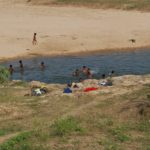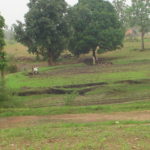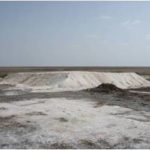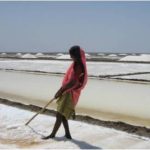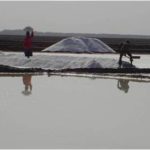-
 Where We Work
Where We Work
WHERE WE WORK
ANANDI’s direct field engagement occurs is pockets of poverty and vulnerability in Gujarat the western state of India. These areas are located in the eastern tribal belt and one block in Saurashtra region. In Saurashtra the organisation works in another block which still retains a strong feudal caste culture and the focus is to demonstrate the role of elected women members of the Village Panchayat in addressing the development needs of the marginalized communities.
DEVELOPMENT INDICES
Table 1 – Some development indices of the LAKs’ work area of ANANDI
| No | Detail | Devgadh Baria | Ghoghamba | Shehara | Maliya | Shihor |
|---|---|---|---|---|---|---|
| 1 | Total population of Taluka (Census 2001) | 188,996 | 179,659 | 231,325 | 69,964 | 192,763 |
| Female | 94,081 | 86,977 | 112,248 | 40,835 | 92,659 | |
| Male | 94,915 | 92,682 | 119,077 | 43,137 | 100,080 | |
| 2 | Social group | |||||
| OBC (Other Back ward Castes) | 17,000 (76%) | 16,569 (8.6%) | ||||
| SC (Census 2001) | 6,648 (3.6%) | 4,353 (2.4%) | 10,857 (4.6%) | 4,652 (5.57%) | 519 (0.27%) | |
| ST (Census 2001) | 45,555 (23.4%) | 72,123 (40.1%) | 36,358 (15.7%) | 126 (0.15%) | 66% | |
| 3 | Literacy rate[1] (dist. Edu. Dept. for year 2012) | 37.79% | 36% | 47.47% | 20-40% ## | 913 |
| 4 | Sex ratio (Census 2001) | 991 | 938 | 943 | 941 | 3 |
| 5 | IMR (Block Health Officer at the block office 2012) | 102 | 104 | 11.56 | 5,320 | |
| 6 | No of BPL ration cards (Mamlatdar office 2012) | 6,702 | 9,839 | 13,579 | 1,634 | 3,199 |
| 7 | No of BPL ration cards (Mamlatdar office 2012) | 6,702 | 9,839 | 13,579 | 1,634 | 3,199 |
PANCHAMHAALS AND DAHOD (Ghogamba, Shehera and Devgadh baria)
The major problems of the districts locted in the eastern tribal belt are a high incidence of poverty, seasonal subsistence farming, low or no employment opportunities in locally especially in the lean season and a high rate of temporary and long term distress out migration in and out of state in search of work.
THE PEOPLE
The Bhil, Nayak and Rathwa in that order of priority are among the vulnerable sub tribes of three blocks, besides the Baria, Pagi, and Pateliya the non tribal recognised as socio economic and educationally backward communities (SEBC).
SOURCES OF LIVELIHOOD
For the past two decades the Bhil and Nayak have remained largely in the agriculture labour sector, and seasonal activity of forest produce collection (of Mahuva, doli, timru patta, gums and other NTFPs). Some of the poorest Bhil and Nayak families are dependent on firewood collection for everyday survival. The Baria and the Rathwa have picked new skills in construction work. They have also take on alternatives in form of “shared cropping” for the landed families of “Patels” in central Gujarat and Saurashtra and Kutch regions. They provide labour from Dahod and Panchmahaals at less than NREGA wages in regions such as Saurashtra. In these areas typically the local labour market rates are much higher. However we also noticed that the annual village rate exercise that takes place every year on “Dev” – village festival, this year many villages have raised the local daily agriculture wage considerably to Rs. 50/- for harvesting and weeding and Rs. 80-100/- for paddy sowing. Again this is much lower than the minimum wage rates of agriculture. The LAK has supported several legal cases of non- payment of wages to the migrant agriculture labour, one of the most vulnerable groups in the unorganised sector labour. The construction workers from Dahod and Panchmahaals possess varying specializes abilities from demolishing of old building to centring ( RCC form work), tile fixing, plumbing, road construction etc. The other high skilled, high risk job that the youth are engaged in is electrification, laying telephone and gas lines, rail tracks, without any social security or medical insurance except RSBY providing health service to only the BPL families. One research study conducted by ANANDI on maternal health reecorded over 12 cases of maternal deaths in the year 2011. High level of anaemia among pregnant women leads to severe malnutrition among children, about 62% of children of the forest dweller and migrant worker families are severely malnourished who are under the age of five years. Inadequate supplies, staff in ICDS run Anganwadis, health and education department, inefficient and poorly motivated public servants at the lower levels of government, public sector banks further act as a hindering block to the ensure good governance in these already vulnerable areas. While effects of migration on health, education and safety are often shared by men and women, women get adversely impacted on their reproductive health by migration.
MORBI - MALIYA MIYANA BLOCK
ANANDI began its interventions in Maliya (Miyana) Taluka located on the border of Little Rann of Kutchh, in Rajkot district in year 2001 post the Gujarat Earthquake. In 2014 a new district Morbi was carved out and now Maliya Miyana falls under this district. One of the poorest blocks of the district, Maliya, faces problem of severe salinity, erosion of green cover and decreasing sweet water sources, desertification, recurrent cycles of drought and, more recently, cyclones have led to the erosion of the natural resources in the area. Of the total 47 villages, 20 villages are located at a distance of less than five kms. from the coastline. ANANDI works in these 20 villages.
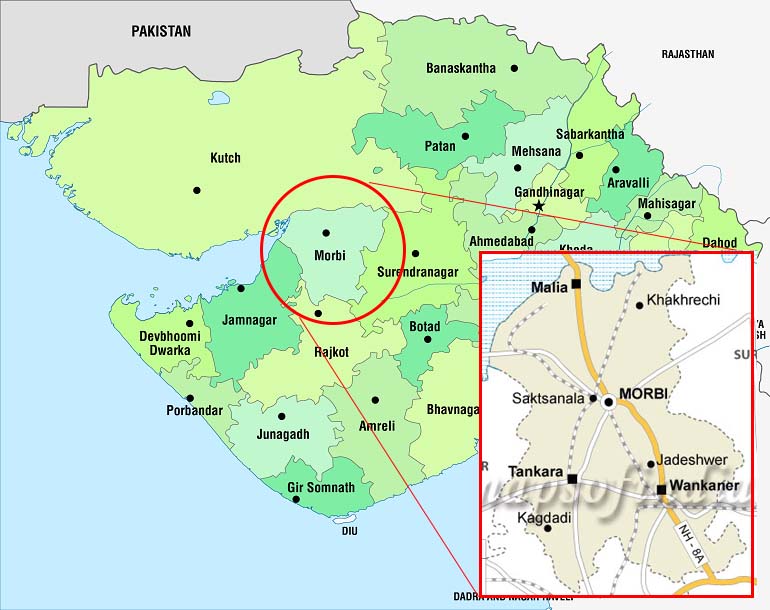
THE PEOPLE
As per the census data 76% of the population of the block comprise of OBC – i.e. the Muslims, the Kolis, the Ahirs. The SC population is much smaller compared to the state at 3.5% and ST is only 0.5%. The 20 villages along the coast line are predominantly inhabited by the Miyana community of the OBC category follow the Muslim religion. 97% of all Miyana community are residents of Gujarat and are concentrated in Maliya taluka of Rajkot and Halvad Taluka of Surendranagar district, and hence the block is recognized as Maliya Miyana.
The Rajkot Gazette notes that the Miyanas were fisher folk from Sindh province of Pakistan who were invited from Kutch to Maliya in the last two decades of the 19th century by Maliya’s first chief who was trying to gain independence from his brother, the ruler of Morbi. The Miyanas were documented as courageous but lawless people. In modern day the Miyanas are shunned by the caste Hindus as they belong the minority community, they eat non vegetarian foods and in general by the state machinery because they are seen as “those who don’t follow the laws of the land”. Until a few years ago women’s mobility was restricted and they could move about only when accompanied by men.
The villages close to the coastline have poor literacy rate between 20-40 percent, while remaining villages have literacy rate between 60- 80 percent.
SOURCES OF LIVELIHOOD
Rainfed agriculture, salt manufacturing, and prawn harvesting are the three main occupations of the Miyana community. Much of the agricultural land has become saline and hence the traditional food crops of Bajra and pulses are no longer grown. Growth of tile manufacturing industries in the nearby Morbi block has become an option preferred by the youth. But this means that they have to either spend on travel or live in slum like settlements in these semi urban regions away from their families.
Saltpans are seen developed in this region, which are formed by the high tide water entering through the river channels. Majority of the Miyana community work as wage labourers in the salt pans from November to April/may in extremely tough conditions.
And in the estuarine region during the monsoon season (July to October) the families of these 20 villages are engaged in prawn harvesting. It is well documented that the Prawn Harvesters of the Little Rann of Kutch are predominantly from the Miyana community .
After the farming season most Miyana families move to two different locations first for prawn harvesting closer to the coast which are practically inaccessible for lack of any roads. Then they move close to the salt pans and live in shanties. Thus for eight months of the year the families live in … “poor conditions in the absence of potable water. hygiene and all basic amenities and services provide by the government to which all Indians are entitled The Prawn Harvesters largely form the Miyana community, do not have ration cards, or voter cards and thier hamlets are so remote that even information about the government schemes do not reach them”. (pg.2 ;Living on the margins: Prawn Harvesters of Little Rann of Kutch; 2011).
Harsh living conditions make survival a struggle and with a drop in the cultivation of food grains the children and women are facing severe malnutrition as now they no longer have grain stored from the harvest, but have to buy the grain from the open market. Women’s mobility is limited between the farms and the home and thus their access to nutritious food is limited.
As in all communities engaged in subsistence farming being prawn harvesting or agriculture or salt, the women play an important role in all the livelihood related activities. Given the overall harsh conditions, women’s health in general and reproductive health in general is adversely affected..
It is through consistent advocacy and pressure through the sangathans that a mobile health van service has been initiated, which is still far below the actual requirement.
BHAVNAGAR DISTRICT – SHIHOR BLOCK
Bhavnagar is part of the region known as Saurashtra comprises of the peninsular part of Gujarat State and includes six districts. Historically this region has always been distinct from the mainland of Gujarat, in terms of its native people, its rulers and its links with trade through ports with other countries. These differences have in many ways carried over even after independence when the innumerable princely states of Saurashtra gave up their territory over to the republic of India. The problems and the opportunities for development are also therefore very distinct from that of the mainland Gujarat.
ANANDI works in Shihor and Umrala blocks of Bhavnagar as it supports and guides Mahila Swaraj Manch.

THE PEOPLE
Saurashtra is primarily a caste society and is strongly rooted within the feudal culture. In the post independence scenario the agriculture community has become economically strong as they became owners of land. The Patels are very good agriculturists and with land entitlements in their name they exploited the land and water resources to maximise the economic benefit. The Darbars or the erstwhile ruling community lost out economically but their social influence still remains strong. Large sections of the police departments in the lower and middle hierarchy are drawn from the Darbar community and they thereby continue to exercise their feudal power through new mechanisms.
The Dalits form an average of about 6–8% of the population. They have traditionally been landless workers, and assigned the work of scavenging and cleaning in the villages. Although there are few overt manifestations of untouchability, it is still deep rooted in people’s mindsets. Women of the scheduled castes do become members of mahila mandals but in most villages they will not sit at the same level as that of the higher caste women.
OCCUPATIONS
As the economy has shifted from food crops to cash crops, wage work has increased and this has meant cash incomes for the landless labourers. Many families have moved to the cities for construction labour and sweeping and cleaning jobs with the municipal corporation wards. The small and marginal farmers that mostly belong to the Koli community are the worst hit as agricultural patterns have shifted from food to cash crop cultivation. They are tempted to grow cotton and groundnuts, but it is not viable as they are unable to realise economies of scale. They spend a lot of money to tap ground water, which is fast receding to lower depths.
Land is an asset only for those who can spend on water and fertilisers. With cash crop cultivation hybrid seeds also become the norm and so do chemical pesticides. Thus there is tremendous pressure on the land (quality) and water (quantity) resources leading to environmental degradation.
Many families have started sending at least one or two young children to the new non-farm based small industries such as diamond polishing to ensure steady incomes. This directly affects the education of young boys and further they are exposed to the ills of the small towns such as video lending parlours, gambling, cheap sexual pleasure, etc, for which they now have money to spend on.
Over the years that have seen changes in the social, economic and political spheres the situation of women has changed only marginally. In fact, one can say that the problems of the feudal society remain and to that are added those of the cash economy and environmental degradation.
THE WOMEN
The silence of women and their ability to cope with injustice is in general considered as part of the glorious tradition. There are caste wise differences in the status of women in Saurashtra as the rural society is still organised along caste lines. Women have been known to state, “It is a curse to be born in the Darbar community for we are wanted by no one and have no control over our lives”. The Darbar women do not have any property rights within their parental or marital home. The community strongly believes that marriage is forever whatever be the circumstances for the women.”
Dowry demands have increased with higher incomes in certain communities and this is then emulated by those communities who are not really in a position to maintain these standards of expenditure on ceremonies and dowry. The victims are invariably women who suffer violence, destitution and death. “Atrocities among the women are high but not reported due to social pressures. Widow remarriage is uncommon even now.”
The women of poor landless, small and marginal farmer families of the Kolis, and dalits are the ones that work on the farms for wage work. The women of the Patel community work on their own field in peak season and otherwise have to cook the meal for the labourers on their fields. The same study mentioned above give work participation figures for Saurashtra and Kutch as follows; “The number of women reflected in the study data as cultivators includes those females who are engaged in farm work for not less than six months. The percentage of cultivators is 41.6% of the total female population above 16 years.” Although the women work both at home and on farm they have very little cash money at their disposal and are faced with shortage of money, as traditionally it is believed that women cannot manage finances. Payment of wages of the women’s labour is mostly done through her husband.
Education among women and girls is not common, as even a 10-year-old girl will go to the fields for wage work to support the family. Decisions within the household are male dominated. “There is most equity amongst men and women in (decision making) matters concerning children – 79% of the respondents said that they take these decisions jointly. Women are least involvement is in matters concerning land and house (4% and 9% respectively).” Fetching water and fuel are responsibilities shared by women and the girl child. This is a cumbersome task as the ground water resource is depleting. In the summers, they have to walk long distances to fetch water.
As the cultivation is moving towards cash crops the traditional linkage that women had with food grain cultivation is being eroded. While the men have gained skills in non-farm activities, the women’s skills have been limited to the farm work. As a result the role that women played in ensuring basic subsistence needs of the family has changed to that of merely providing labour for wages, that too go in the hands of the men. Poor women of Saurashtra, therefore, are facing a strange situation where overall incomes have increased, but at the cost of family’s subsistence needs. There is no tradition of women speaking for themselves and hence they suffer the double burden of poverty and of violence related to dowry, not bearing a male son, alcoholism and rape.
